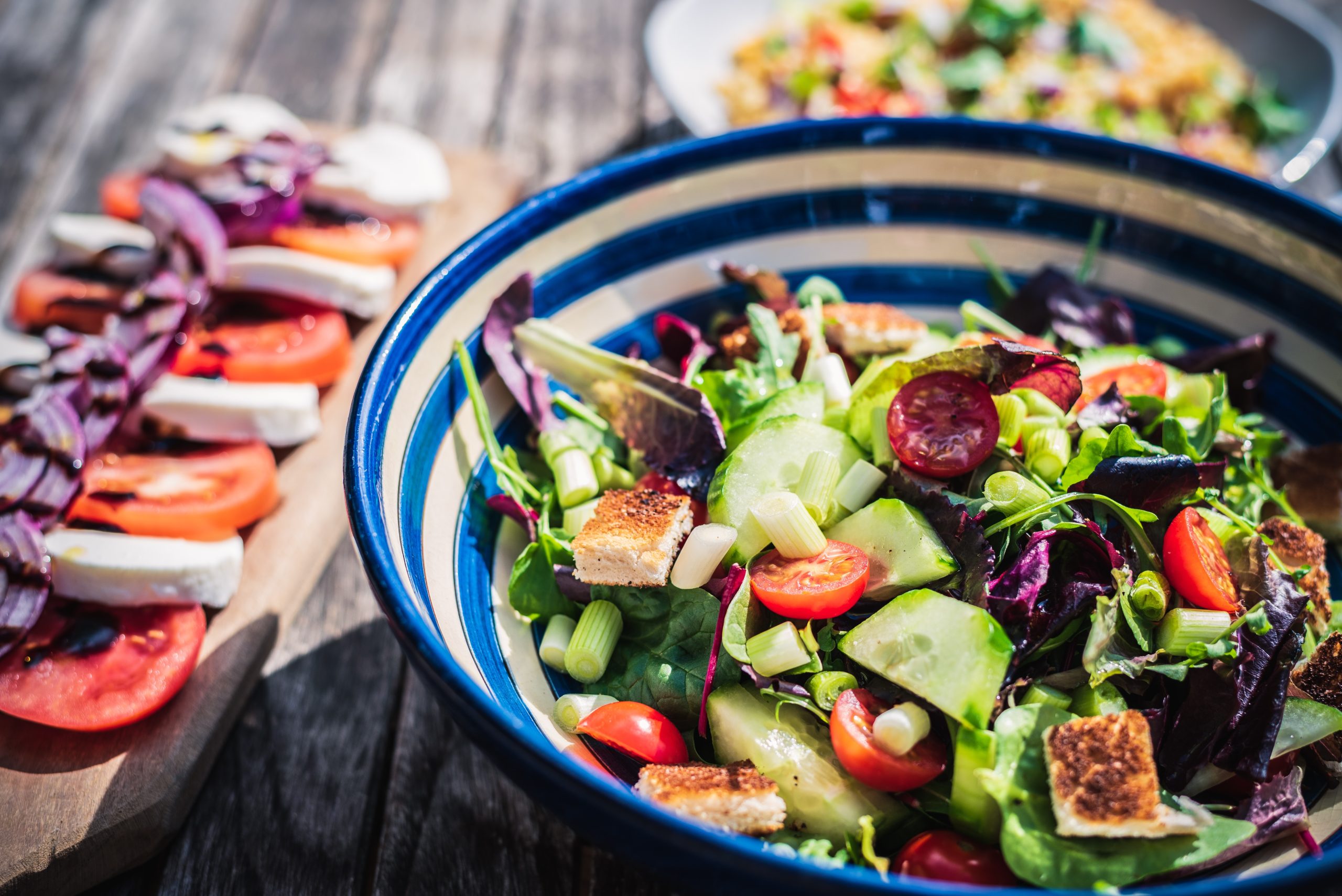Mediterranean-style Eating: Don’t Call It a Diet, Call It Delicious
- April 18, 2023
Fad diets may fade away, but Mediterranean-style eating has delighted cooks and eaters for centuries while impressing health researchers for decades.

The Mediterranean “diet” is an incredibly delicious and healthful way of eating that people in the Mediterranean region have enjoyed for centuries. It’s not a fad diet or a restrictive formula that requires you to count calories or avoid entire food groups. Instead, it’s a lifestyle emphasizing whole, less-processed nutrient-dense foods, fresh vegetables and fruits, lean protein sources, healthy fats and whole grains.
One of the most significant benefits of the Mediterranean diet is that it’s incredibly healthful. Numerous studies have found that people who eat this way have a lower risk of heart disease, stroke, Type 2 diabetes and certain types of cancer. Plus, it’s associated with weight loss and maintenance, improved cognitive function and a longer lifespan.
The best part about the Mediterranean diet is that it’s easy to follow. There are no complicated rules or meal plans to follow. Instead, it’s a way of eating that you can adapt to your lifestyle and personal preferences. You can also enjoy a variety of flavorful foods, including fresh seafood, whole grains, nuts, legumes, and healthy fats like olive oil and avocado. And you don’t have to sacrifice taste for health benefits because the Mediterranean diet is full of delicious, satisfying flavors.
“Shifting the way you eat can feel overwhelming, even when you know that your health would really improve if you did,” said Dr. Christine Nguyen, a primary care doctor at Natividad Medical Group Prunedale. “Sometimes we gravitate to those expensive or extreme diet programs that promise a quick fix, but where the results are usually not long-lasting. The great thing about the Mediterranean diet is that there aren’t hard and fast rules. Instead, the diet gives guidelines for eating healthful, delicious food. That makes it easier to keep it up — and the diet you’re more likely to stick to is the best one.”
Make New Eating Habits Stick
Studies show that committing to habits will change how you see yourself, which is more potent than focusing on a goal. So rather than just saying you want to “eat healthier” or “lose weight,” try reframing what kind of an eater you are. Telling yourself and others that you eat plant-based, Mediterranean-style foods rather than saying you’re on a diet is an effective way to stay on track. Remember, it’s ok if you’re not eating all the perfect foods all the time. Consistency is much more important.
By emphasizing fresh, whole foods and healthy fats, this way of eating can help you maintain a healthy weight, reduce your risk of chronic diseases and boost your energy levels.
Step 1: Find ways to incorporate these foods into your regular eating patterns. Where can you easily add these foods in? What can you swap? Want to feel proud of your accomplishments and remind yourself of your new identity? Then, keep track of what you’re eating.
MEDITERRANEAN-STYLE DIET GUIDELINES
- EAT: vegetables, fruits, nuts, seeds, legumes, potatoes, whole grains, herbs, spices, fish, seafood and extra virgin olive oil
- EAT IN MODERATION: poultry, eggs, cheese and yogurt
- EAT RARELY: red meat, sugar-sweetened beverages, added sugars, processed meat, refined grains, refined oils and other highly processed foods
Quick Ideas:
- Switch from whatever fats you use now to extra virgin olive oil. Start with cooking, and then try some new salad dressings with olive oil as the base. Maybe you’ll even use olive oil instead of butter on your crusty bread.
- Instead of processed snacks, eat a handful of raw nuts every day as a healthy replacement.
- Add whole-grain bread or other whole grains to the meal. Select dense, chewy, country-style loaves without added sugar or butter. Experiment with bulgur, barley, farro, couscous and whole-grain pasta.
- Begin or end each meal with a salad. Choose dark greens and whatever vegetables are in season.
Step 2: Try out some recipes that feature these delicious ingredients. We love this list of cookbooks from Prevention magazine.
Step 3: As you get more comfortable with Mediterranean eating, try out some specifics:
- When you think about fruits and vegetables, see if you can eat one item from every color of the rainbow most days: Purple/blue, green, yellow/orange, red, white and brown. Try a new vegetable every week. This way, you’re getting the full array of antioxidants the plant world offers.
- Eat at least three servings a week of legumes. Options include lentils, chickpeas, beans and peas.
- Eat more fish, aiming for two to three servings a week. Both canned and fresh fish are fine.
- Eat less meat. Choose lean poultry in moderate, 3- to 4-ounce portions. Save red meat for occasional consumption or use meat as a condiment, accompanied by lots of vegetables, as in stews, stir-fries and soups.
- Cut out sugary beverages. Replace soda and juices with water.
- Reduce sweets and desserts. Poached or fresh fruit is best. Aim for three servings of fresh fruit a day. Save cakes and pastries for special occasions.
- Seek out the best quality food available. Farmer’s markets are an excellent source of locally grown, seasonal foods.
